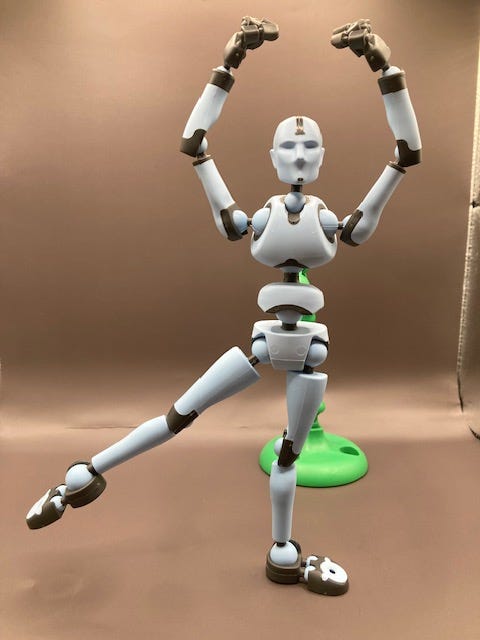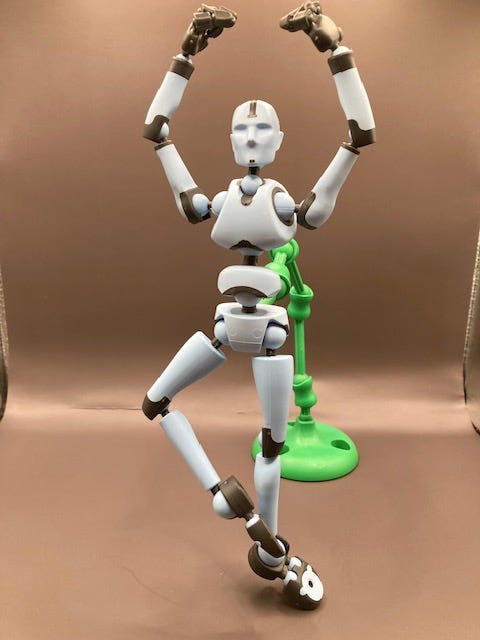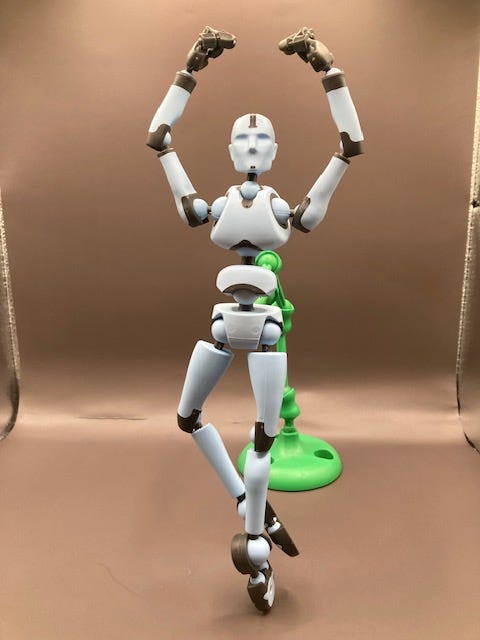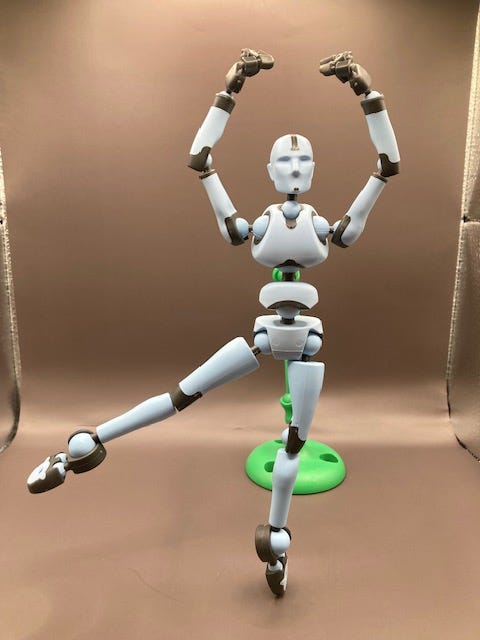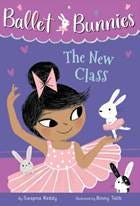French For Dancers: Flic Flac
French For Dancers
Demystifying dance terminology and steps for dancers and dance-lovers!
Issue 37: Flic Flac
Bonjour! Welcome to French For Dancers
Parlez-Vous Ballet?
(Do you speak Ballet?)
FLIC FLAC
(flick-flack)
Flic Flac is one of those amusing ballet terms that has no real translation, because it sounds like itself (it’s onomatopoeic!)– two quick flicks of the foot.
Occasionally, it’s known by a fancier, more formal term: battement fouetté à terre (whipped step on the ground), which is a mouthful. Most people just call it flic flac (or flic-flac).
This is an intermediate movement that helps with positioning for turns, and speed for petit allegro beats. It can be done with or without a turn.
It is most commonly found at the barre, often paired with battement frappé or petit battement. But it can also be used in the center as a transitional movement between steps.
The basic flic flac consists of two quick brushes of the working foot in towards the standing ankle (into the coupé/cou de pied position – not the wrapped sur le cou-de-pied position).
Begin with the leg extended out to the side in tendu or at 45-degrees.
For en dehors (outside), brush the working foot into coupé back, then slightly open it out (not fully straightening the leg, similar to a petit battement) and brush it quickly to coupé front. The working leg then extends out again. The rhythm is a quick “in-in-out,” with the accent on the “out” at the end.
Meanwhile, the standing foot comes to a relevé while the working foot does the two brushes (see Student Tip below). Both the “flic” and the “flac” must have contact with the ground through the toes and ball of the foot.
For en dedans (inside), the foot brushes to the front first, then the back.
The flic flac can end with the leg extended out to a tendu (in any direction), a 45-degree dégagé, or a pose such as an attitude. In the turning version, it can also finish in the coupé/cou-de-pied position, though it is more common to open into another pose at the end.
Savoir-Faire
(Know-How)
Student Tip:
The standing leg – to relevé or not to relevé? And if so, when? And how high?
Flic flac is taught in a few ways: staying flat, gradual height, or full relevé (demi-pointe) height.
Your teacher will have a preference, most likely based on their training method or the choreography of the full exercise. The older Vaganova training had dancers stay flat for the “flic” and rise to relevé on the “flac,” then lower to flat for the outward tendu or dégagé. More current training often has dancers hold the relevé at the end, into the extension.
Some teachers may have you come into a quarter-relevé (lifting the heel slightly for the “flic” and full relevé for the “flac,” while others may prefer a coming to a high relevé in the “flic.” It is important that, whichever way you perform it, you maintain control of your turnout and don’t let either leg slide or rotate inward into parallel.
Teacher Tip:
Flic Flac en Tournant (turning flic flac):
During a turning flic flac, the movement is performed quickly and the “flac” is less of a full brush than a push, giving momentum to the second half of the turn.
For en dehors, during the “flic” to the back, the standing leg begins to rise to relevé and the body starts turning to the outside, away from the standing leg (and the barre). Keep the working leg fairly tight for the “flac” forward and use it to help propel the body around to finish the turn. The flic generally gets the body ¼ of the way around, and the flac completes the other ¾.
To perform this en dedans, the “flic” comes into the front, and the body begins turning inward (towards the barre). The “flac” brushes to the back as the turn continues.
I like to have students practice the turns with a half-turn first, whether en dehors or en dedans. That way, they can work on the brushing or flicking motion and think about the correct direction in which to turn. Note – with a half-turn, the working leg will end up on the barre side, and may not be able to extend out to the side if there’s a wall in the way.
Once these mechanics are understood and can be performed correctly, students can work on flic flac with full turns, finishing with extensions into 2nd or attitude.
À La Carte
(From the Menu)
Recommendations, reflections, and/or useful links
I love finding fun ballet books. And I’m also a fan of rabbit-themed books.
So, when I recently came across an adorable children’s book, Ballet Bunnies: The New Class, I snapped it up! The first in a series by New Zealand author Swapna Reddy, it’s a chapter book for 6–9-year-olds, published by Random House Children’s Books, and illustrated by Binny Talib.
New ballet student Millie gets some valuable extra coaching and confidence building from several rabbits who live at the ballet studio (though no one else can see them). It’s charming for young readers, and has a short glossary of ballet terms in the back.
I may have to look for more in the series… and keep an eye out for rogue rabbits in the studio!
Merci!
(Thank you!)
Thank you for reading this newsletter! If you have friends who might enjoy this, please share the link with them!
- Peggy




